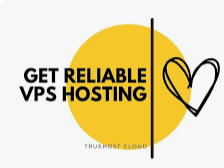
In this article, I want to look at how to do Audience Targeting in Video Ads. I will be looking at targeting and bidding options and how we can use them to run the most efficient campaigns possible. In particular, we will look at:
1. On-Point Targeting
2. Right Person with Audience Targeting
3. Right Place with Contextual Targeting
4. Introducing Advanced Targeting
5. Refine further with Targeting Exclusions
6. Set up and Start Remarketing
7. Brilliant Bidding
Put very simply, targeting allows you to place your ad in front of the right people and on the right websites.
Targeting increases audience engagement by ensuring ads are displayed to the right users as often as possible. Accomplishing this reduces wasted spending on impressions or clicks and increases the likelihood campaigns will deliver a positive ROI.
You may choose to start your targeting strategy by using the Display Planner tool. This shows you the potential reach and cost of targeting ideas to help you plan your display and video campaigns.
It can be a good place to start when you begin running campaigns for the first time. You must be logged into Google Ads in order to use the Display Planner. See the link in the references below.
1. Navigate to the Display planner either via the link below or by clicking the wrench icon in Google Ads. Under ‘Planning’ click ‘Keyword Planner.
2. Here you have a number of options:
- Search for targeting ideas using a website, phrase or category: This is the most widely used, as it gives you a multitude of targeting options based on the input of a broad sense of what type of targeting you are interested in.
- Find top placements by location: This allows you to look at the top partner websites, YouTube channels, and videos by country.
- Get inventory details for your targeting: This is useful if you know what targeting options you are going to go after, you can enter your targeting here and get a rough estimate of what volumes of impressions you have the opportunity to show for.
- Get performance forecasts for your targeting: You can go one step further and input budgeting/CPV info to see what type of performance you can expect.
There are two distinct forms of targeting; Audience and Contextual. Think of it as the Who and the Where.
- 1. Audience: Who do you want to show your ad to?
- Contextual: Where do you want your ad to be shown?
Audience targeting allows you to be more accurate when choosing who sees your ads.
In marketing and advertising, your audience is a particular group of consumers within the predetermined target market, identified as the targets or recipients for a particular advertisement or message.
Using audience targeting in AdWords is a way of segmenting your website’s users and reaching users around the web-based on their behaviour online and the signal these actions send about their likes, interests and purchase patterns.
Audience targeting takes a number of forms:
- Demographic targeting: Allows you to reach people who are likely to be within the age, gender, parental status and income that you choose.
- Affinity Audiences: Lifestyle and interest profiles based on a user’s browsing behaviour.
- In-Market audiences: Users who are more likely to be in-market to purchase a specific product or service based on their browsing behaviour.
- Re-marketing: Target users who have previously visited your site, or provided their email address to you.
- Similar Audiences: Create mirror audiences based on your remarketing lists or customer email lists.
Demographic targeting
- You can set and adjust demographic targeting for age, gender, parental status and household income (if info is known).
- “Unknown” in AdWords refers to people whose age, gender, parental status, or household income have not been identified.
- You should not exclude “Unknown” age and genders from targeting as they often represent a large number of users. It is important to note that the system can only target if this information is known. It can know this if, for example, someone is using Chrome and is logged into their Google account while browsing, or if they’re signed into a YouTube account, where they have given this information. Otherwise, the system will do a “best guess” based on browsing behaviour. To exclude this segment is to significantly restrict your reach.
- People mostly fall into the “unknown category” for display, however, this is much more accurate for YouTube, and as such, it is not advised for Display campaigns. Change the default settings which is to target all demographics.
Affinity Audiences
- If you’re familiar with TV audiences, you’re already familiar with the concept of an affinity audience.
- Affinity audiences are good for brand awareness. It is the broadest audience targeting available and reaches people in the beginning of their buying journey.
- When using affinity audience targeting, you are targeting people who have shown an affinity for your product or service in their internet behaviour – based on the content they interact with, past purchases and websites they frequently visit. You have options such as Beauty Junkies or Outdoor Enthusiasts for example.
- You can also create Custom Affinity audiences by blending interests together for a specific cross-section of users, such as Travel Buffs who are also interested in Health & Fitness, to advertise Hiking Holidays too.
In-market audiences
- When a user transitions from being interested in a subject to actively beginning their buying journey, they become in-market.
- In-market audiences are good for reaching people who are in the middle to end of their buying cycle.
- A user is counted as part of an in-market audience for 7-days, up to the point they make a purchase or stop showing any signals of purchase intent.
- As a result of targeting people who are already actively shopping or searching for your product or service in such a short period of time, it means that the reach can be smaller compared to an affinity audience, however, it is far more targeted and dynamic in how users are constantly joining and leaving this audience.Action Point
PS: I know you might agree with some of the points that I have raised in this article. You might not agree with some of the issues raised. Let me know your views about the topic discussed. We will appreciate it if you could drop your comment. Thanks in anticipation.
Fact Check Policy
CRMNuggets is committed to fact-checking in a fair, transparent and non-partisan manner. Therefore, if you’ve found an error in any of our reports, be it factual, editorial, or an outdated post, please contact us to tell us about it.
Become Part Of our Fan Base on Facebook. Click Here.
Follow Us on Twitter. Click Here.
Many Crypto. One place. Use RoqquHi, I now use RavenBank to send, receive and save money. I also pay my bills with ease, you should try it out too
OUR MISSION
To create well-reached contents that will increase the intellectual prowess of our readers.
OUR VISION
To become a reference point in the blogging space by the year 2030. We want to be among the first 30 blogs in Nigeria.
Official Social Media Pages for crmnuggets.com
Join Our Telegram Channel: CRMNUGGETS
Twitter: @cehnigeria
Facebook: @CRMNuggets
Instagram: @crmnigeriablog
Pinterest: CEHNIGERIAThreads @crmnuggets
![]()








Leave a Reply